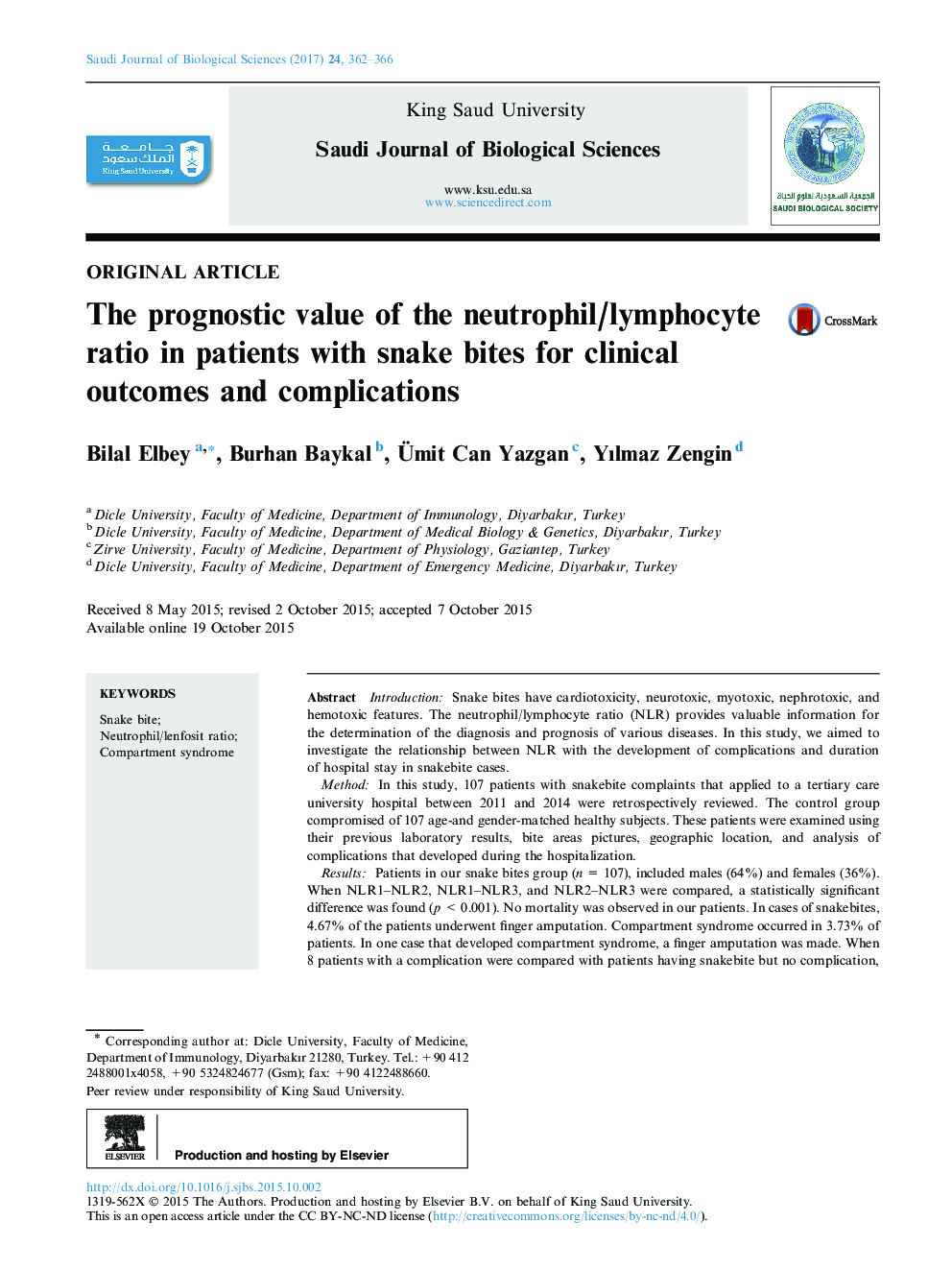| Article ID | Journal | Published Year | Pages | File Type |
|---|---|---|---|---|
| 5745634 | Saudi Journal of Biological Sciences | 2017 | 5 Pages |
IntroductionSnake bites have cardiotoxicity, neurotoxic, myotoxic, nephrotoxic, and hemotoxic features. The neutrophil/lymphocyte ratio (NLR) provides valuable information for the determination of the diagnosis and prognosis of various diseases. In this study, we aimed to investigate the relationship between NLR with the development of complications and duration of hospital stay in snakebite cases.MethodIn this study, 107 patients with snakebite complaints that applied to a tertiary care university hospital between 2011 and 2014 were retrospectively reviewed. The control group compromised of 107 age-and gender-matched healthy subjects. These patients were examined using their previous laboratory results, bite areas pictures, geographic location, and analysis of complications that developed during the hospitalization.ResultsPatients in our snake bites group (n = 107), included males (64%) and females (36%). When NLR1-NLR2, NLR1-NLR3, and NLR2-NLR3 were compared, a statistically significant difference was found (p < 0.001). No mortality was observed in our patients. In cases of snakebites, 4.67% of the patients underwent finger amputation. Compartment syndrome occurred in 3.73% of patients. In one case that developed compartment syndrome, a finger amputation was made. When 8 patients with a complication were compared with patients having snakebite but no complication, the initial NLR was found to be higher and statistically significant (p = 0.042). The average length of stay of patients in the hospital was 9 days. In the analysis of the correlation between the duration of hospitalization and NLR, the patients with a high level of NLR were found to have a longer hospital stay compared to lower NLR levels (p = 0.012).ConclusionNLR was significantly increased in patients that developed complications and needed a longer stay in the hospital.
